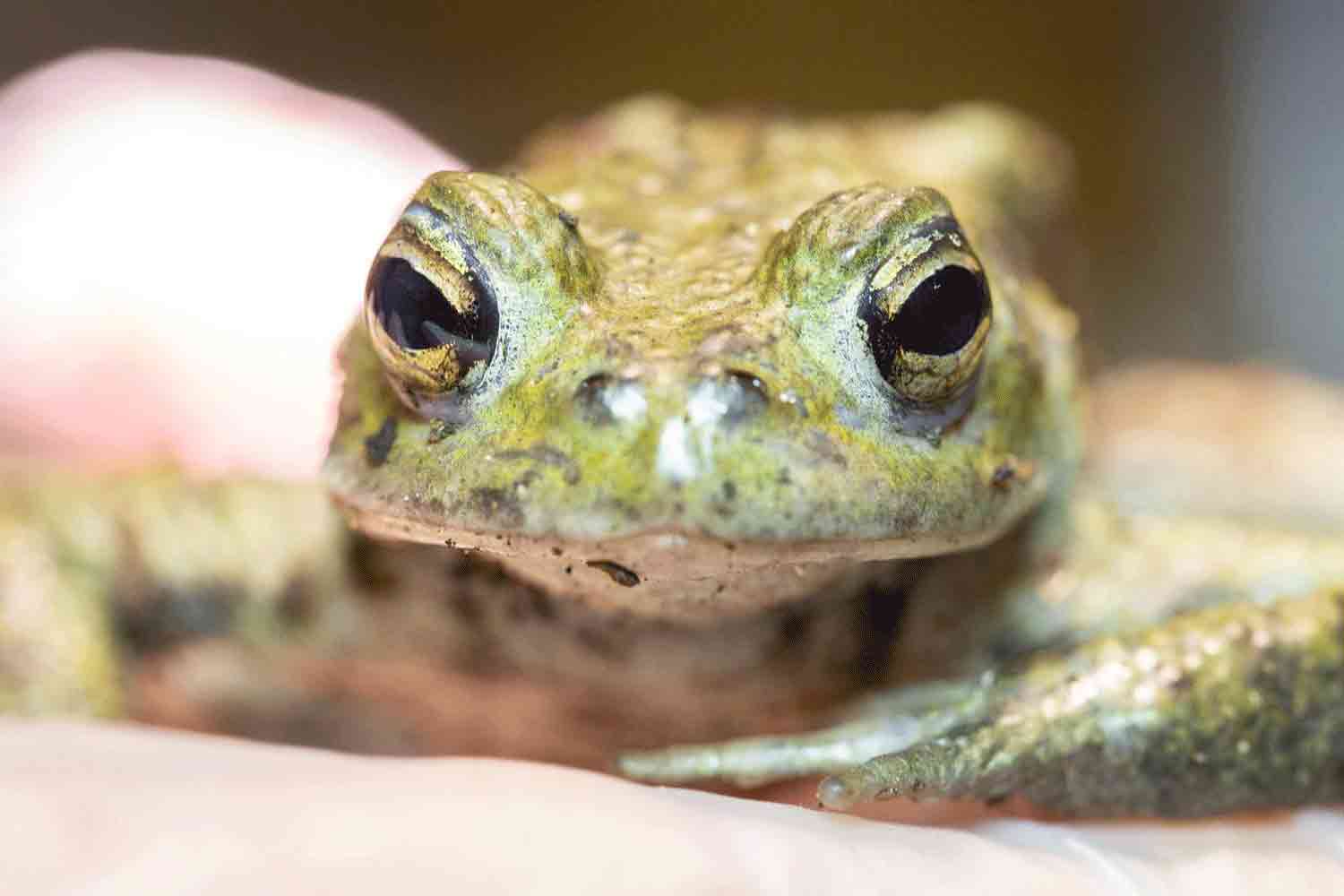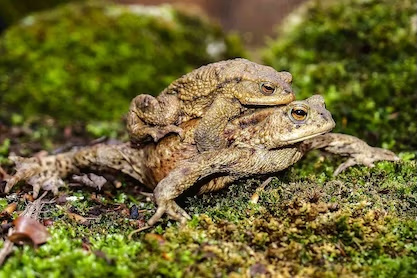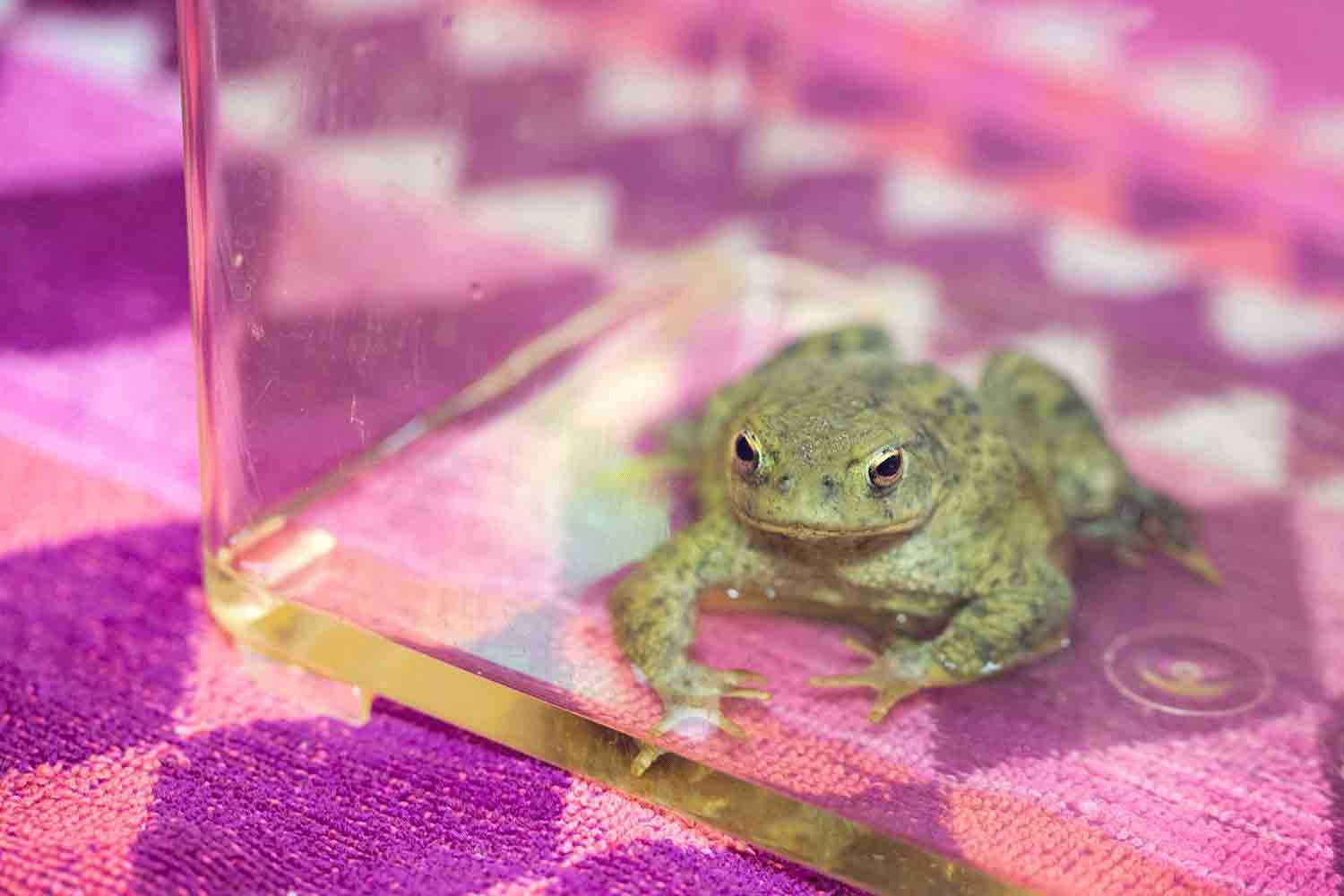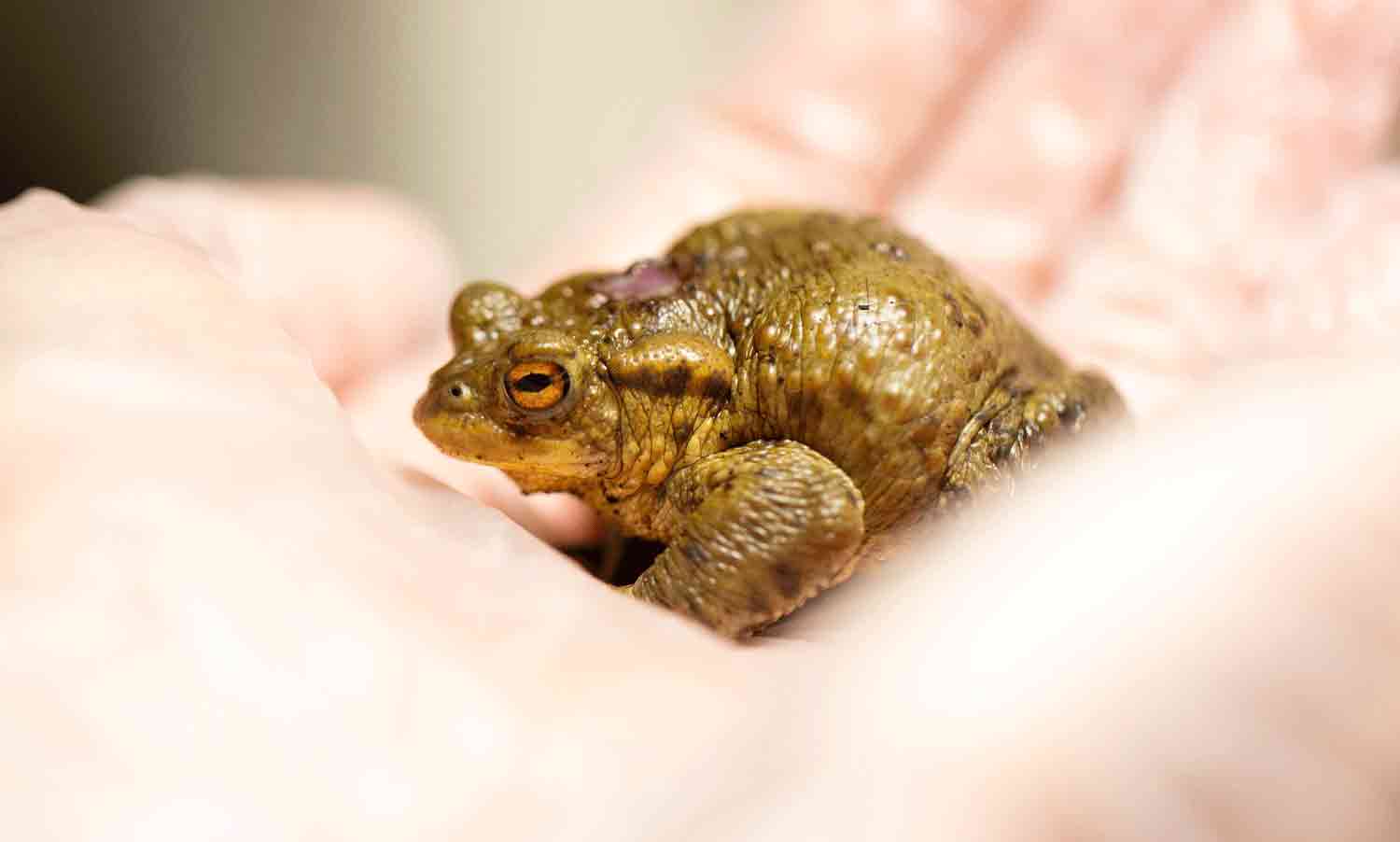Common Toad
Bufo bufo
Life History
Length: 8cm-13cm
Weight: up to 80g
Diet: Carnivorous – Insects, snails, slugs, earthworms, spiders and small fish.
Average Lifespan: 4 years
When to see them: March to October
UK conservation status: Least Concern

About
A member of the amphibia class, the common toad can be identified by its short black legs, golden eyes and dry, warty, olive brown skin, distinguishing it from its class cousin, the frog. A friend of the garden, toads will often hoover up any slugs and snails; protecting plants and flowers. They are an indicator species for environment condition, highly sensitive to pollution and chemicals.
Behaviour
Famous for their mass migration back to their historic breeding grounds during spring, the larger females can often be spotted carrying the smaller males back to the ponds, where the female will then lay between 3,000 to 6,000 egg spawn.
The rest of the year toads can be found in gardens, woodlands and hedgerows. Like the adults, toad tadpoles, occasionally known as “toadlets” contain toxins that help deter predators due to the unpleasant taste, this protects them in deep ponds that have fish.
Favouring log piles, rockeries and old garden pots to hibernate under during winter, the loss of these ‘toad homes’ is having a detrimental effect on toad populations. As a nocturnal species, the best time to spot toads is when they’re out hunting at night.


Their Threats
A range of issues effecting the common toad has resulted in a decline of 68% over the last 30 years.
Loss of habitat: Particularly the loss of breeding ponds. Drainage of wet areas has reduced the amount of wet woodland.
Human infrastructure: Like roads pose a serious threat by disrupting migration routes.
Gardening works: Injuries occurring as a result of disturbing nesting sites is a common reason for toads to be admitted to wildlife centres.
Pollution: Pollution to our waterways has a detrimental effect on water and amphibious life.
Disease: Chytrid fungus is thought to be a serious threat to the common toad. The natterjack toad is also known to be susceptible to this disease
How you can help
There are a number of simple ways you can help Toads:
- Provide log piles and rockeries for toads to give a safe space to overwinter
- Avoid using pesticides and harsh chemicals in your garden
- Keep a note of a local wildlife rescue in case you find an injured toad
- Join your local toad patrol in spring to help toads return to their breeding ponds safely.
